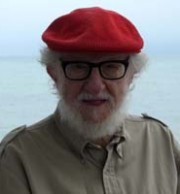
Spearheaded by the National Oceanic and Atmospheric Administration (NOAA), the Arctic Report Card has been produced each year since 2006, and with each passing year, the footprint of climate change throughout the far north is growing.
The 2014 Arctic Report Card paints a picture of a region in transition from a largely frozen, sealed off region to one that is accessible by ships and other means on a seasonal basis, with huge changes taking place in the region’s marine and land-based species (yes, including polar bears).
Unlike in some of the other years, this report found evidence of temporary developments that would seem to go against the prevailing global warming trend, such as a temporary pause in the accelerating total ice mass loss rate of Greenland’s ice sheet, for example.
However, the report concludes, “… Overall, the long-term trends provide evidence of continuing and often significant change related to Arctic amplification of global warming.”
Here are some of the key findings:
Average annual air temperatures continue to increase in the Arctic about twice as fast as in the rest of the world.

Image: NOAA Arctic Report Card 2014

Image: NOAA Arctic Report Card 2014
Despite a modest uptick in sea ice in 2014, the long-term decline continues.
In September, the minimum sea ice extent was the sixth-lowest in the post-1979 satellite era record. Scientists noted a slight increase in the prevalence of older, thicker ice in some parts of the Arctic. Such sea ice does not melt as readily during the summer months, and could be an indication that 2015 will also see a bit of an increase in sea ice extent.
However, sea ice specialists do not see 2014’s slight recovery as evidence that long-term sea ice loss is changing course.

Such short-term variability does not mask the long-term trend, which is for far less sea ice and more areas of open water during the summer and early fall. The September monthly average sea ice extent trend is now -13.3% per decade relative to the 1981-2010 average.
The eight lowest sea ice extents since 1979 have each occurred in the last eight years, according to the Arctic Report Card.
Hey Greenland: You’ve got an albedo problem.
The Report Card — which never actually gives the Arctic a letter grade — shows that melting affected about 40% of the surface of the Greenland ice sheet. The average albedo of the ice sheet, which is a measure of the reflectivity of the ice, during summer was the second-lowest on record since such measurements began in the year 2000. A new, ice sheet-wide record low albedo occurred in August 2014.
The albedo is relevant because it is an indication of how much solar energy the ice sheet is absorbing versus how much it is reflecting back to space. A high albedo means the ice is reflecting a lot of incoming energy back out to space, most likely leading to less melting. A low albedo is a sign of an ice sheet that is primed for higher amounts of melting.
For example, on a hot summer day, dark sidewalk pavement, which has a low albedo, tends to be far hotter compared to lighter surfaces.

Image: NOAA Arctic Report Card 2015
What is unusual about the 2014 Greenland melt season is that despite the record low albedo, the ice sheet did not lose more mass than it did in the previous year. The highest measured ice mass loss rate occurred in 2012, when the ice sheet lost an estimated 474 gigatonnes of ice.

Image: NOAA Arctic Report Card 2015
Ice loss from Greenland, Antarctica and glaciers around the world are now the leading contributors to sea level rise. The fate of the ice sheets will determine how much sea levels will increase during the next several decades and beyond.
Here is what the mass loss trends look like, with what may be a temporary leveling off between 2013-14, depending on a variety of factors, including the prevailing weather patterns during the summer of 2015.

Image: NOAA Arctic Report Card 2015
And about those polar bears…
For better or worse, polar bears have long been the iconic symbol of global warming, and new data bolsters the case that declining sea ice as well as faster spring melting of land-based snow cover, together with other aspects of a changing climate, are adversely affecting various populations of polar bears that live across the Arctic region.

Image: NOAA Arctic Report Card
The Arctic Report Card finds that, in areas where there is high quality data about polar bear populations, there are some worrisome signs emerging.
For example, between 1987 and 2011, a decline in the survival of female polar bears of all ages has now been attributed to earlier sea ice break-up and a later freeze-up in the fall. In the southern Beaufort Sea, “polar bear condition and reproductive rates” have declined, according to the report.
Studies show that polar bears have been through long periods of population decline during the last one million years, including in periods of lower sea ice, making predictions about future polar bear populations difficult.





